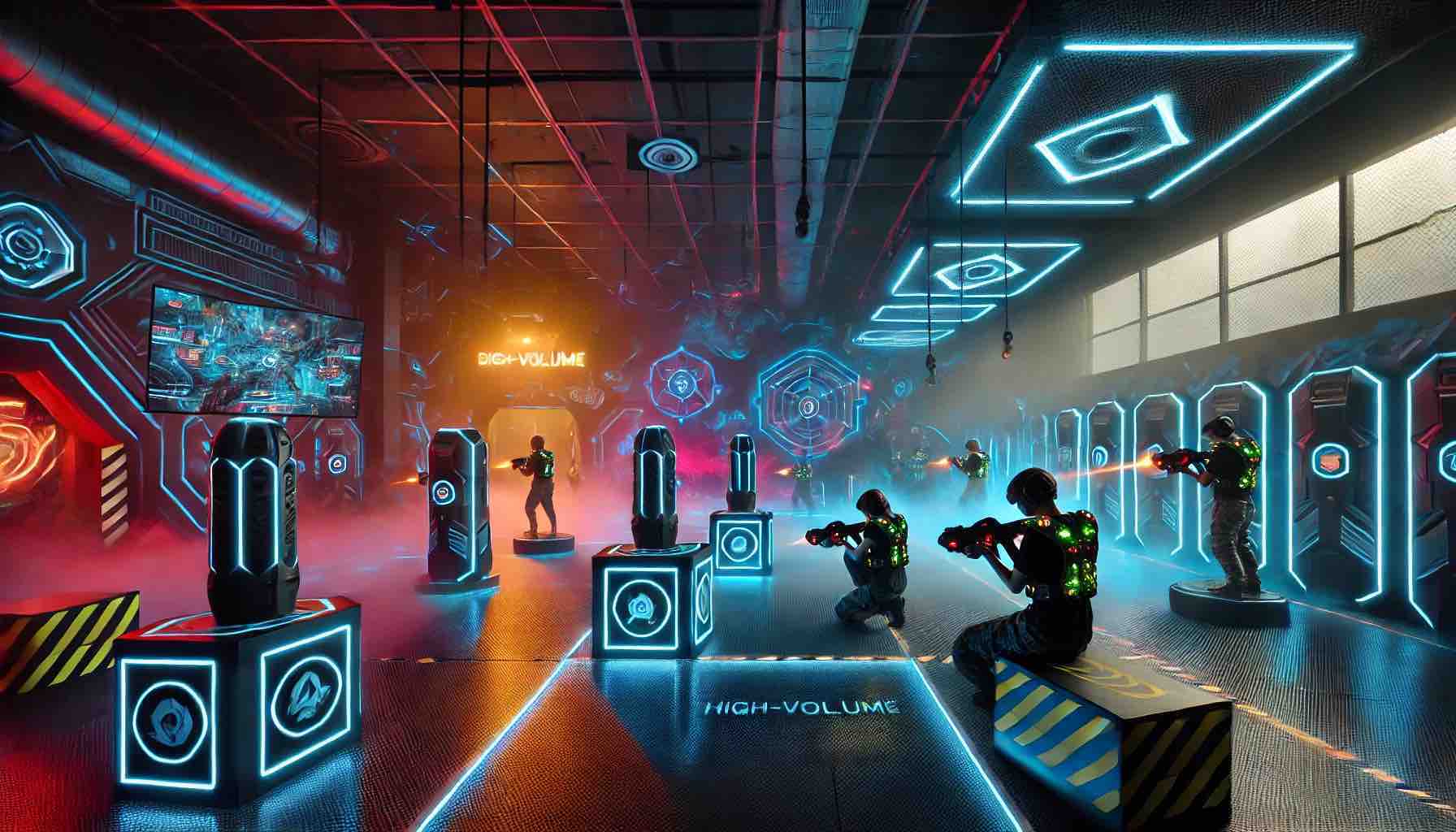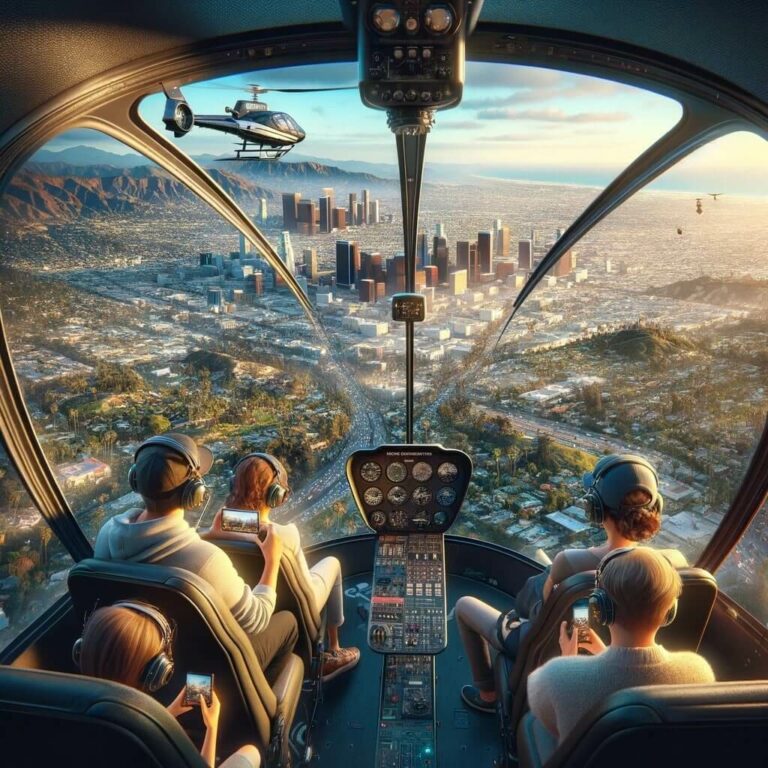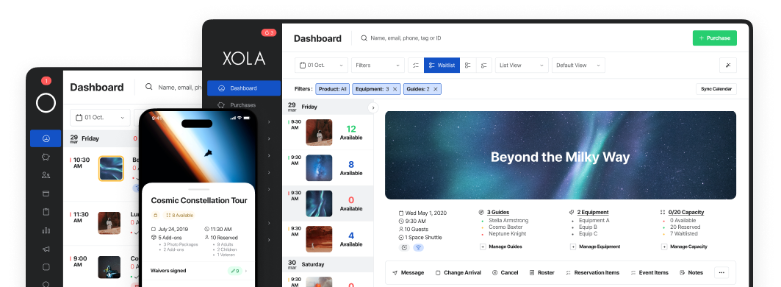
It can feel like a struggle to secure direct bookings. You might find it easier to lean on OTAs and other platforms to bring in guests. But we’re here to tell you that getting more direct bookings for your aerial experience doesn’t have to be complicated.
It’s all about connecting with your guests at the right time, in the right way and that’s exactly what we’ll show you how to do in this post. From a user-friendly website to engaging email campaigns, here’s how you can cut out third parties and drive more direct bookings for your aerial experiences.
- 1. Create a killer website
- 2. Make your calls-to-action stand out
- 3. Personalize your email campaigns
- 4. Offer incentives for booking directly
- 5. Take advantage of UGC
- 6. Collect customer feedback and display it on your site
- 7. Write great tour descriptions
- 8. Make your site mobile-first
- 9. Optimize your site for SEO and AI SEO
- 10. Invest in paid ads
- 11. Recover abandoned bookings
- 12. Invest in the right booking software partner
1. Create a killer website
Your website is the face of your business online. It’s the first place potential customers will visit when considering your aerial experience, and first impressions count. A clean, user-friendly site that loads quickly and shows what makes your experience unique is key.
Take Black Hills Aerial Adventures, for example. This helicopter operator highlights the stunning views of the Black Hills and Badlands in South Dakota on its site, giving potential customers a taste of the epic views they’ll experience. Visitors can easily scroll through tour options, see real-time availability, and make a booking within minutes. No confusion. Just the information they need to take action.
As an aerial experience operator, showcasing the correct availability in an easy-to-read format, such as in calendar form, is important. In the photo above, you can see that Black Hills gives customers all the information they need—details about the tours, pricing, and availability—without overwhelming them with too much clutter. Aim for that.
2. Make your calls-to-action stand out
Here’s an easy one: Make your call-to-action buttons impossible to miss.
You’d be surprised how many potential customers leave your website just because they couldn’t find that “Book Now” button in time. It’s all about making that button stand out. Place them front and center, where it’s natural for your guests to see and click. The easier you make it for them to take action, the more likely they’ll follow through.
There’s actually some science behind this. For example, studies show that the color green can inspire action, so using it for your “Book Now” button could encourage guests to take the next step. Pair that with a strong, clear message like “Book Your [Flight/Cruise/Tour] Now!” and set yourself up for more conversions.
3. Personalize your email campaigns
Don’t underestimate the power of a good email campaign. Email is a great tool to keep your attraction front and center, nurture relationships, and, of course, drive more bookings. The key is to make each message feel personal. For example, sending a memorable “VIP sunset” offer to guests who had previously booked a similar tour.
Readers are likelier to open, click, and book when offers feel tailored. And don’t forget about your subject lines. A good one gets your email opened, so make it catchy. “Your exclusive 20% off tour is waiting,” or “Limited spots left for this weekend’s sunset cruise” can do the trick. Email marketing is a powerful tool when you use it to offer value, so keep it relevant—and make it personal.
4. Offer incentives for booking directly
We all know that people love a good deal. If you want guests to book directly with you instead of going through third-party sites, you must make it worthwhile. Offer a limited-time discount, like 10% off, or throw in an extra perk—maybe a free souvenir photo. Another small but impactful move could be a “locals’ discount” for residents. It may seem simple, but small gestures like this help build guest loyalty.
Another great tactic? Add flexible cancellation policies that only apply to direct bookings. This gives guests the peace of mind that they won’t be locked into something they might not want to do later. Just remember: the key here is to make the offer exclusive, clear, and easy for customers to take advantage of. When booking directly with you feels like the best deal, they’ll be more likely to choose you over OTAs.
5. Take advantage of UGC
When you see a photo of happy people enjoying an experience, you can picture yourself having a good time, too. Displaying photos of your customers smiling and having fun is a great way to draw potential customers in. By leveraging user-generated content (UGC)—or the photos your guests take and share on social media—you don’t have to invest in costly photography to make that happen.
6. Collect customer feedback and display it on your site
Another form of UGC is customer feedback. Did you know one of the biggest reasons travelers prefer OTAs is the social proof they provide, especially through reviews and ratings? Customers trust what others say about your experience—whether it’s a glowing review or a shared photo—and this kind of user-generated content (UGC) helps build credibility and trust with new guests.
For example, many OTAs display customer reviews prominently, giving people the security they need to make a booking. To compete with this, you need to bring that same social proof to your own website.
Encourage past guests to share about their experiences by tagging your brand in photos or using branded hashtags on social media. Also, follow up with customer satisfaction surveys to learn even more about their experience. You can then highlight this content on your site or social channels to show potential customers the real, unfiltered experiences of others.
7. Write great tour descriptions
Your tour descriptions can either pull guests in or lose them altogether—which is why we’ve created an entire guide about how to write them. The first step? Know your customer. Who are you trying to attract? What are they looking for in a tour?
For example, a “romantic sunset cruise” might appeal to couples, yet not so much to a family of four. Everything on your site, especially your tour descriptions, should be tailored to meet the specific interests of your target audience. A well-rounded description not only highlights the most unique aspects of your offering but also anticipates customers’ questions (Are there meals included? Is there parking on-site?).
A strong title, paired with beautiful photos, will also grab attention. And don’t forget about SEO. Research relevant keywords for your tour, like “sunset cruise in [location]” or “family-friendly boat tour.” Including these keywords in your descriptions will help your listing rank higher in search results, making it easier for potential guests to find you.
8. Make your site mobile-first
A mobile-friendly checkout page is no longer optional—it’s essential, especially if you cater to tourists. Nearly half of all experience bookings happen only after travelers arrive at their destination. And how do they make those bookings? On their phones.
This is where having a responsive website gives you the edge over competitors. A site that delivers a great user experience across both desktop and mobile ensures customers can easily book, whether at home or on the go.
Consider how different it can feel viewing your site on a small screen, and adjust your call-to-action buttons and booking forms accordingly, making them easy to click and quick to navigate.
9. Optimize your site for SEO and AI SEO
Search engine optimization (SEO) is the strategy used to appear higher in Google’s search results, which allows potential customers to find you online. The right SEO strategy ensures that when someone searches for aerial experiences in your area, your site appears at the top.
Start by identifying key terms your target audience is searching for, like “helicopter tour in [location]” or “scenic hot air balloon.” Use these keywords in your tour descriptions, titles, and meta tags. Further buff up your SEO strategy through blog posts centered on related topics. For example, a helicopter tour operator could publish a blog post titled, “10 Best Scenic Flights in the U.S.”
SEO isn’t just about ranking higher—it’s about bringing in the right customers. By focusing on the search terms your ideal guests are using, you’ll boost relevant traffic and, in turn, increase your bookings.
10. Invest in paid ads
The catch with SEO is that it can take time for your site to rank organically on Google. Paid advertising, on the other hand, is one of the fastest ways to rise up those search results.
Google Ads operates on a bidding system, where you “bid” on keywords like “helicopter tours in [location].” When someone searches for that, your site can appear as one of the top results. And with pay-per-click ads, you only pay when someone clicks.
A high ranking isn’t enough to convince someone to book, though. A strong call-to-action and a landing page that aligns with your ad are essential for driving immediate conversions. The good news is that Google makes it easy to track ad performance, so you can continuously refine your strategy as the campaign lives on.
11. Recover abandoned bookings
How many times have you seen a high number of visitors on your checkout page, only to find out they never completed a booking? Abandoned bookings can be a major revenue loss for aerial tours.
Fortunately, booking software like Xola offers a solution. Our abandoned cart feature sends an automatic email reminder to customers, bringing them back to finish their reservation. This tool has been proven to recover bookings from those who got sidetracked or weren’t fully ready to commit.
12. Invest in the right booking software partner
Finally, all prior tips will fall flat without the right booking software. Choosing a booking software is not just about managing reservations online; it’s about finding a partner that genuinely cares about your business’s growth.
Xola was created specifically for tours and attractions, meaning everything, from the checkout system to the back-end management, is designed with operators like you in mind. We understand the amount of work that goes into running a tourism business, which is why we’ve streamlined everything into one platform. You can manage pilots, guides, capacity, equipment, and inventory, all while keeping track of your bookings.
With powerful features like lightning deals to fill empty spots and abandoned booking recovery emails that bring guests back to finalize their reservations, Xola helps drive conversions and boost your bottom line.
***
By implementing these tactics—whether it’s optimizing your site, leveraging social proof, or making the booking process seamless on a mobile screen—you can turn casual browsers into committed bookers. Focus on creating great experiences, nurturing customer relationships, and using the right tools, and you’ll see your direct bookings soar.




